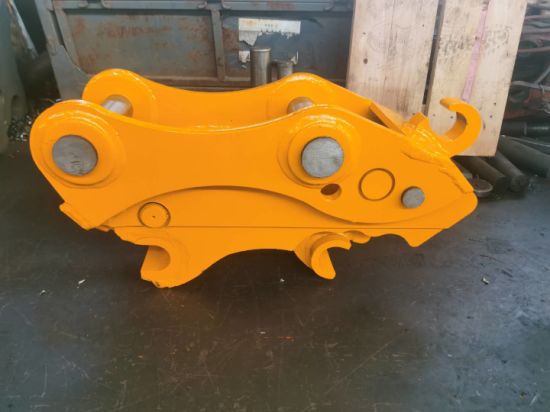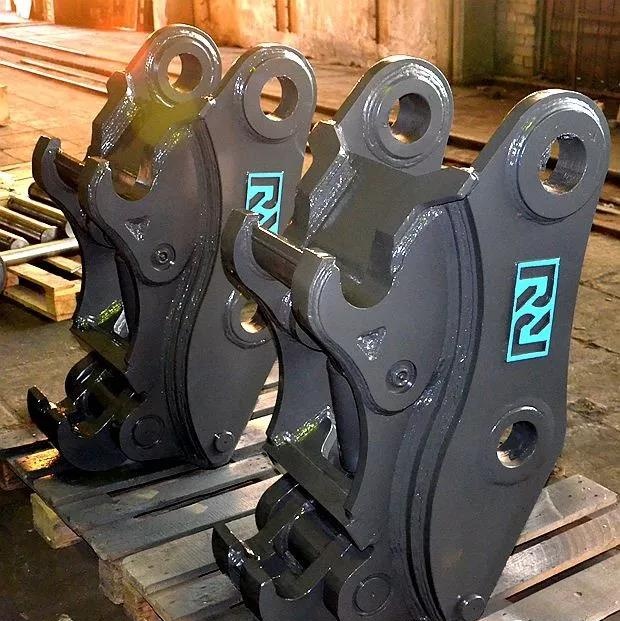 HuiTong
HuiTong  2025-06-13
2025-06-13
In the last issue, we gave you a detailed introduction to the various features, advantages and disadvantages of the first-generation hydraulic quick hitch for mini excavator. Today, let’s take a look at the differences between the second-generation hydraulic quick hitch for mini excavator and the advantages and disadvantages when using them. I hope everyone can be less confused when buying after seeing it. Without further ado, let's take a look at the details of the second-generation quick change connector.

The second-generation hydraulic quick hitch for mini excavator has been adjusted in all aspects after a generation of development and update
The multifunctional hydraulic wrist is based on the first generation of quick-change joints, and increases the freedom of movement such as rotation and swing. In the original excavator's main hydraulic system, the quick-change joint’s connection locking and motion control functions are integrated with the mining The original joystick of the machine is integrated, which can maintain the working habits of the excavator operator. Multifunctional hydraulic wrists began to appear in the 1980s. At present, the main manufacturers include Indexator (registered trademark Rototilt, and its products are divided into 6 series according to different tonnages) and Engcon (registered trademark Tiltrota-tor). There are small-scale manufacturers such as ABL, Steelwrist, Sandco, OilQuick and SMP.
It is mainly composed of hydraulic (screw) adjusting swing device, hydraulic cylinder, full swing device and quick connector. Through the swing of the oil cylinder (or the rotation of the screw), the lateral swing of the implement can be realized, and the left and right inclination angle can reach 40°; the hydraulic motor controlled by the solenoid valve is used to drive the lower 360° slewing device and drive the implement to rotate.

Therefore, after installing the multifunctional hydraulic wrist, the working tools of the excavator have increased the freedom of horizontal rotation and lateral swinging. It can easily achieve different working angles with the best tool without adjusting the position and attitude of the whole machine. Direction of excavation work.
As there are many types of excavators and their machines, in order to improve the versatility of the multifunctional hydraulic wrist, it is usually used in combination with ordinary quick-change joints. Utilize the adaptability of the ordinary quick-change device to the hinged structure of the bucket pin of the excavator, reduce the number of pin replacements, and then use the hydraulic wrist to connect various attachments to meet the requirements of various positions and postures during complex operations , Improved work efficiency.
On the other hand, the rotation or swing transmission mechanism of the hydraulic wrist adopts a worm gear transmission form, which cannot withstand frequent impact loads. Therefore, its application is also subject to some limitations. For example, when performing crushing or vibrating ramming operations, It is necessary to directly connect tools such as breakers with ordinary hydraulic quick hitch for mini excavator to avoid frequent impacts that may cause the failure of the hydraulic wrist drive mechanism.

Therefore, in order to support and popularize multifunctional hydraulic wrists, in Europe, hydraulic wrist products have begun to be standardized, including the size of the upper and lower connection structure, the corresponding matching models, and the connection interface of the matching functional attachments.